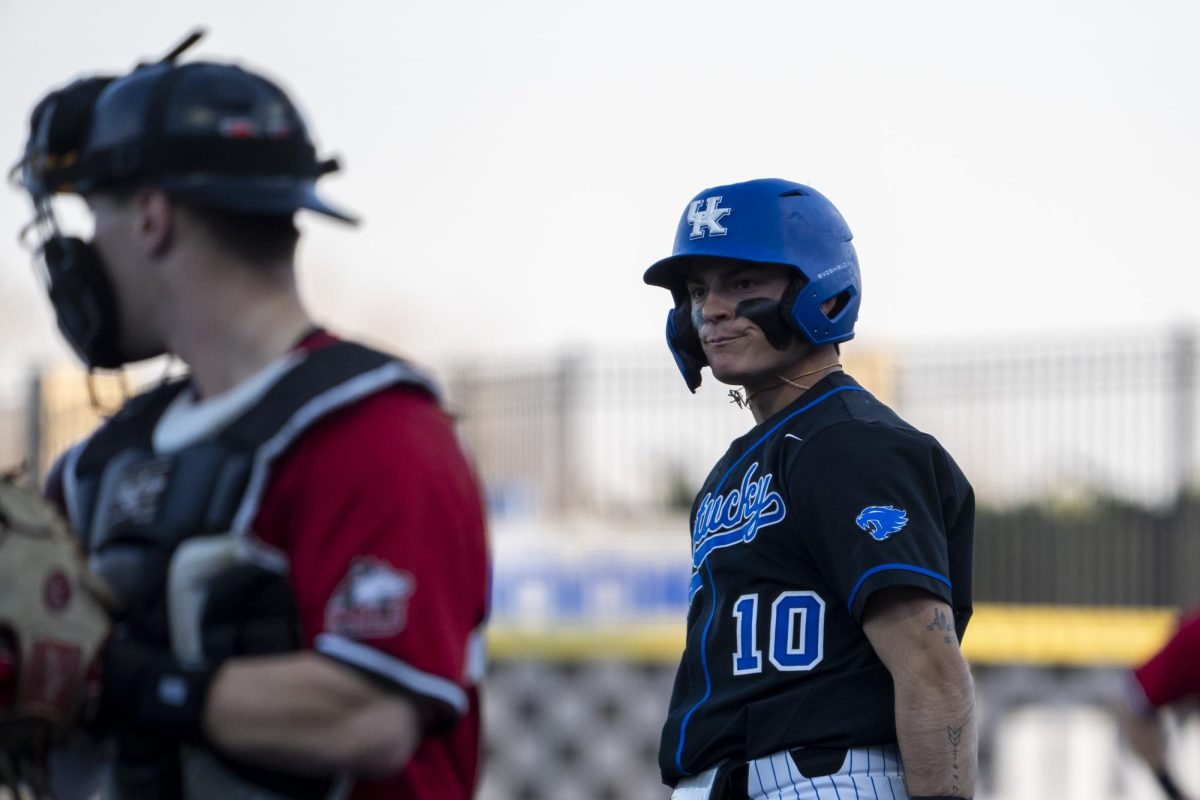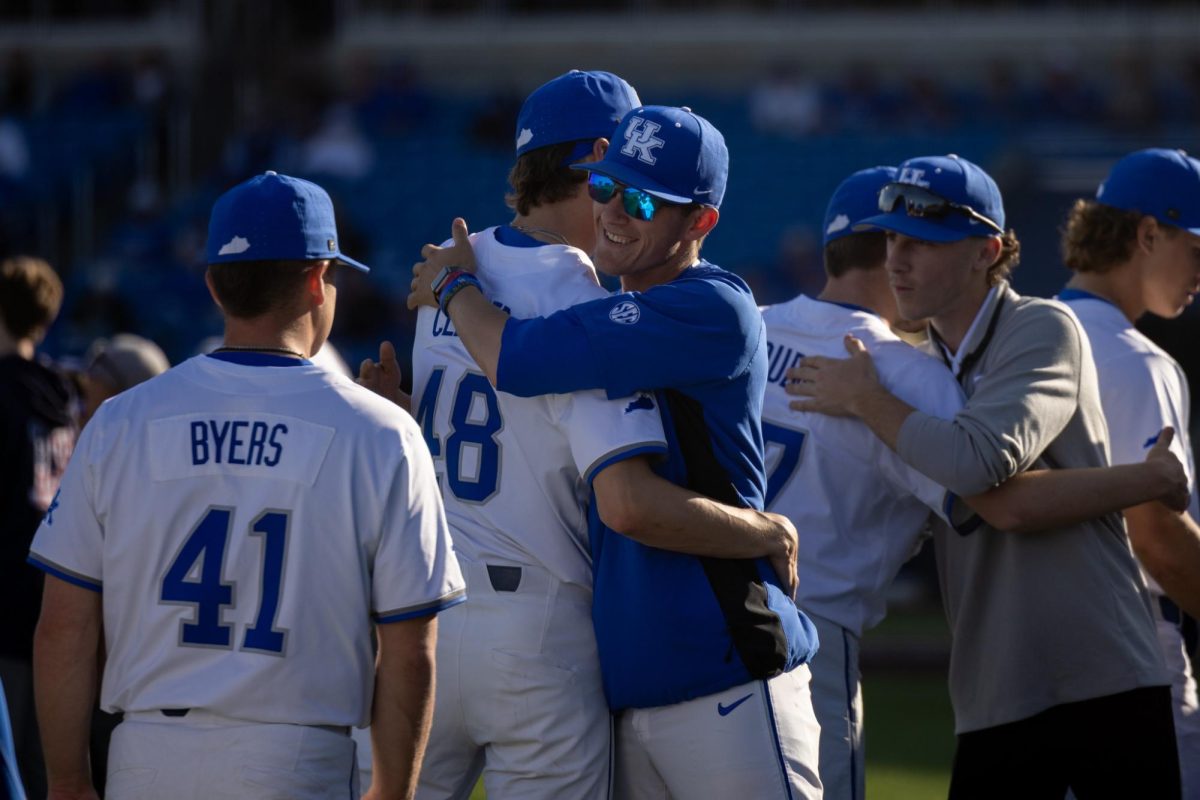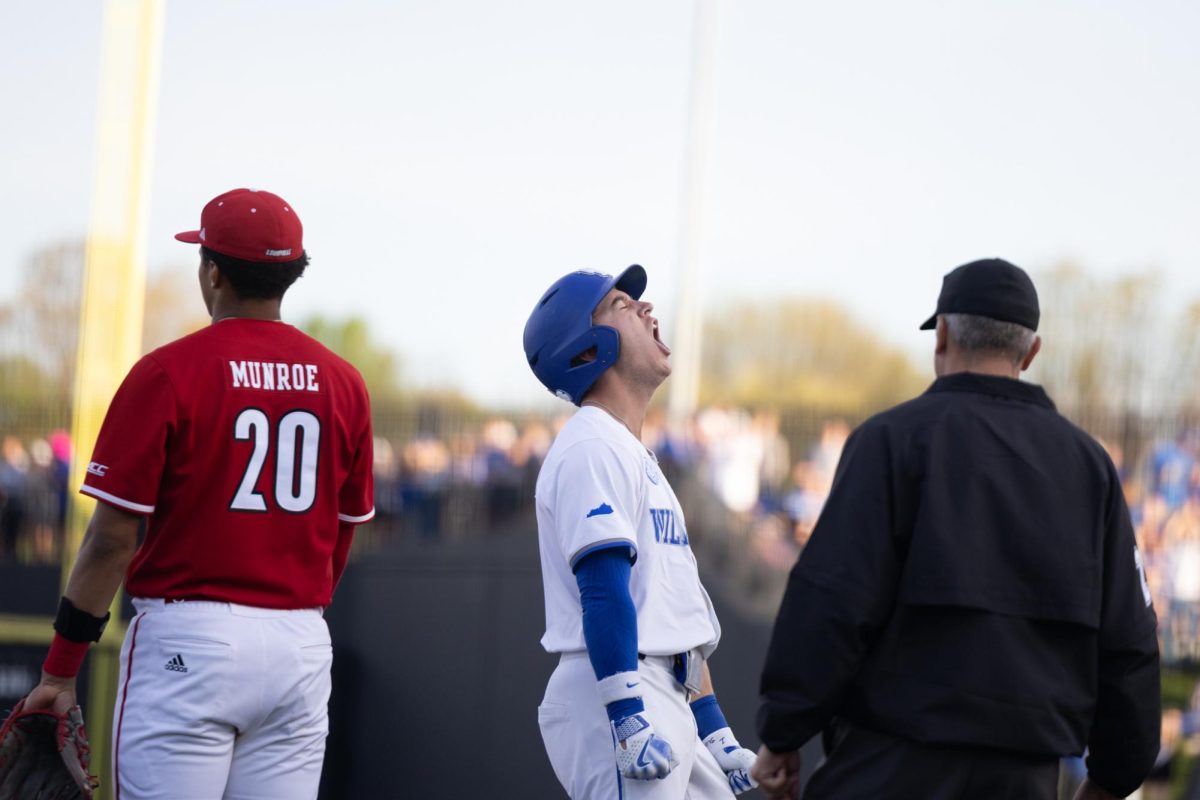Under constr(UK)tion
March 26, 2021
When walking across UK’s campus, the effects of the pandemic are obvious: fewer students traverse the campus, leaving once bustling sidewalks almost empty on occasion. Signs encourage mask wearing and social distancing, while a football stadium ushers in patients, not fans. But one aspect of UK remains unchanged by the pandemic – the clatter and clanging that indicates the presence of campus construction.
Several of UK’s capital projects continued operations or began in the last year.
“Covid has not hurt us as bad as you were thinking. We haven’t had any outbreaks on the job because the contact has been very careful,” said Robert Williams, the Director of Capital Construction at the university. Williams said that there are at least 100 crews working on campus currently.
The total budget for construction projects around campus as of now is around $2.7 billion, according to Mary Vosevich, Vice President and Chief Facilities Officer of Facilities Management at UK. Vosevich said the campus’s mission is to bring a contemporary spin to the classic architecture and aesthetic that it already has.
Though the university has been impacted economically by COVID-19, most of the funding for construction projects on campus comes from private grants, external funding and bonds. This means that portions of money are given to specific projects. There are a few sources of these bonds and grants. Agency bonds are those issued by the University of Kentucky, whereas state bonds come from the state of Kentucky. Similarly, agency funds are supplied by UK. Not all projects are funded by one source alone; some projects require more funding than one source is able to give.
The most expensive project currently underway at UK is the first four phases of the construction of the Healthy Kentucky Research Building, currently estimated to cost $250 million. That total is expected to change because all phases are not yet complete. The facility is intended to house researchers investigating the health challenges of most concern to Kentuckians, including substance abuse disorder, cancer, diabetes and obesity. The project started on March 12 of 2015 and is projected to be complete by June 27 of next year. Multiple sources of funding, including state bonds, agency funds and grants from the National Institute of Health, enabled its construction. Each floor is currently at a different phase of construction; the highest level is being used by researchers already while the lowest level is farthest from completion.
Following the Healthy Kentucky Research Building in terms of cost is the modernization of the Chemistry-Physics building. Chem-Phys’s renovation, which began in December of 2018, is estimated to cost nearly $61 million and funded entirely by agency bonds. The renovation will not be completed until June of 2022; along with the renovation of the interior and exterior, including the addition of an atrium, the Einstein Bagels shop will return to its interior site.
Patterson Office Tower, which houses faculty and staff for the College of Arts & Sciences, is also undergoing renovations. The top floor is being renovated for use as an office space. At $3 million, this project is being funded entirely by agency bonds. The project began on December 5 of 2019 and will be completed by June 11.
A third existing building, the Gatton Student center, is also undergoing construction. The student center opened in 2018 and by 2019 the Board of Trustees voted to approve the expansion, which should add a nearly 10% increase in square footage, bringing the total space above 410,000 square feet. The expansion is estimated to cost $25 million, some of which is an additional gift from Bill Gatton, for whom the space is named. Other funds come from UK and third-party donor, Aramark, the company that operates many of UK’s dining services. Additional needs for space and seating in Champion’s Kitchen is part of what spurred the need for the addition, which will also house student success programs. The project began on June 13, 2019, and is expected to be complete by September 15 of this coming fall. The project was undertaken by Turner Construction Company.
“I’ll be honest with you, this is one of the smoothest projects I’ve had,” said Ben Noble, a project manager for Turner. Gatton Student Center’s initial construction took four years to complete and cost $200 million.
Another construction project will tie in to the student center. Frazee Hall, the center’s neighbor, will be modified to include a bridge from Frazee to the student center. A bridge will help campus meet ADA standards. A committee steered by Vosevitch is supposed to outline areas on campus that do not meet ADA or other accommodations. Construction has not yet begun on the bridge, whose budget sits at $1.5 million provided by agency bonds. If the expected start date in June is met, the project is slated to finish in June of 2022.
ADA standards are also the motivation for a project in White Hall Classroom Building, which is undergoing two phases of construction. The bathrooms in White Hall are the focus of the first phase of renovation in that building. The bathrooms, which have a narrow entry with a turn, will be updated for ADA compliance and a modern look. The first phase will focus on redoing the restrooms in the building, giving the building an updated look and making it ADA compliant. This $3 million project relies solely on agency bonds and is scheduled to conclude by Aug. 16, 2021, in time for the fall semester.
Besides construction efforts, the university is also coordinating deconstruction on parts of its campus. Removal of the Kirwan Blanding Complex began in September of 2019, though demolition of its iconic towers did not start until spring of 2020. The 23-story towers must be removed one floor at a time, and average about a floor a week. Demolition of the towers had to wait for the removal of potentially hazardous materials inside. Now down to the final few floors, all that remains of the towers and previous residence halls is a mountain of rubble. Once that is cleared, the complex is intended to become a campus green space. The 14 acre area is estimated to cost $11 million to restore as a place for students to enjoy nature. The trees surrounding the area will remain, though more than 200 trees in the site were cut down by UK in early 2020, which students said was at complete odds with the proposed green space.
Perhaps the most noticeable project for students is the work being done on Rose Street. Rose Street, which bisects North and Central campus, has been closed for most of the school year and was the source of campus detours when the project extended into its neighboring sidewalk. The work done here is for utilities updates. A final cost has not been determined, but the project was made possible by agency bonds. The completion date has not been set yet either; the official starting date was Dec. 5, 2020, so the project has been underway for more than a year. Rose Street will be permanently closed to vehicular traffic after this project. “A couple years ago we did a study and there were 19,000 pedestrian crossings a day on Rose Street,” Vosevich said. She expressed that the university feels that it will be safer to convert the space to a location for students to sit, enjoy and get to class safely.

























































































































































